Everything you need to know about dandelions, starting with history and how you can make them taste good. We'll also go over other edible parts of the plant you may not have thought about eating before, and my favorite dandelion recipes.
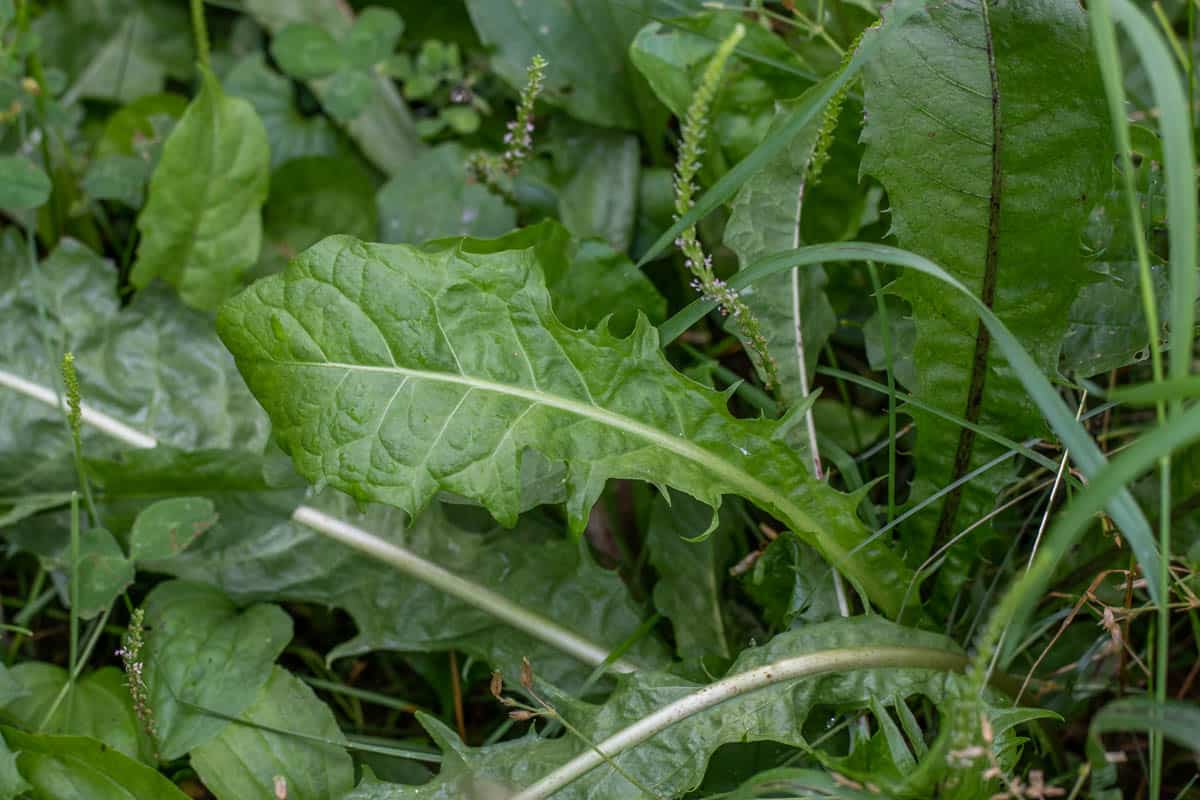
History
Dente de lion, taraxacum, horta-they have lots of names around the world. When the topic of wild food comes up, for many people, especially people not familiar with foraging, dandelions will be the first plant that comes to mind.
It's like, on a subconscious level, people know dandelions are edible, but it's kind of a joke, or seen as only poverty food.
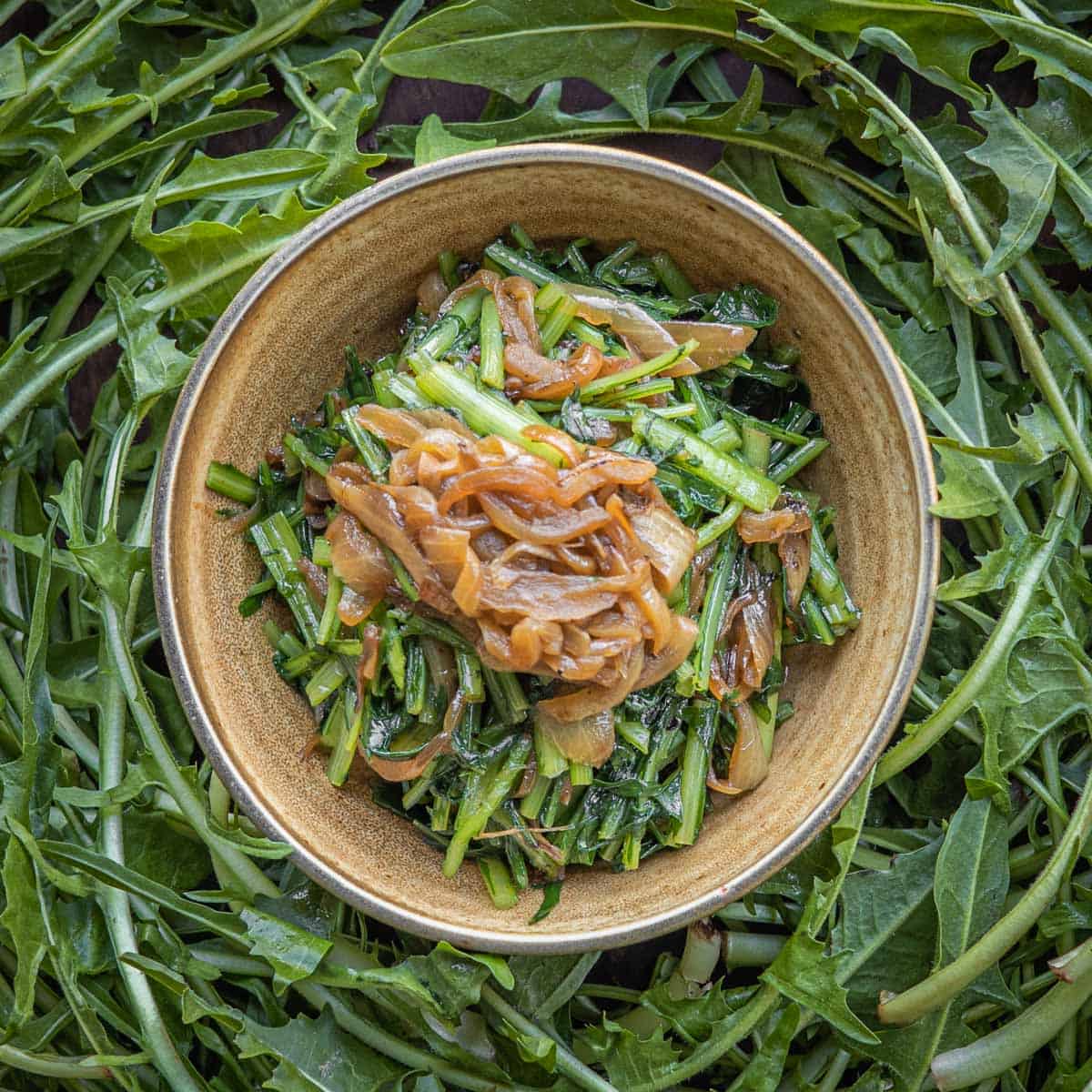
Dandelions don't taste bad, but they can be an acquired taste. Dandelions have been used as a food since ancient times, and are only one of many different types of related plants in the Asteraceae/Aster Family that humans still eat to this day-a loose group of plants known as chicories.
True wild chicory (Chicorium intybus) is a different plant in and of itself, and is actually cultivated as a crop in the Middle East and in the United States (look for it at your local Middle-Eastern or Asian grocer).

Common garden lettuce is an aster too, making it a cousin to dandelions, and if you taste carefully when you eat leaf of iceberg or green lettuce, you'll notice a casual resemblance in their flavors, although it's mild.
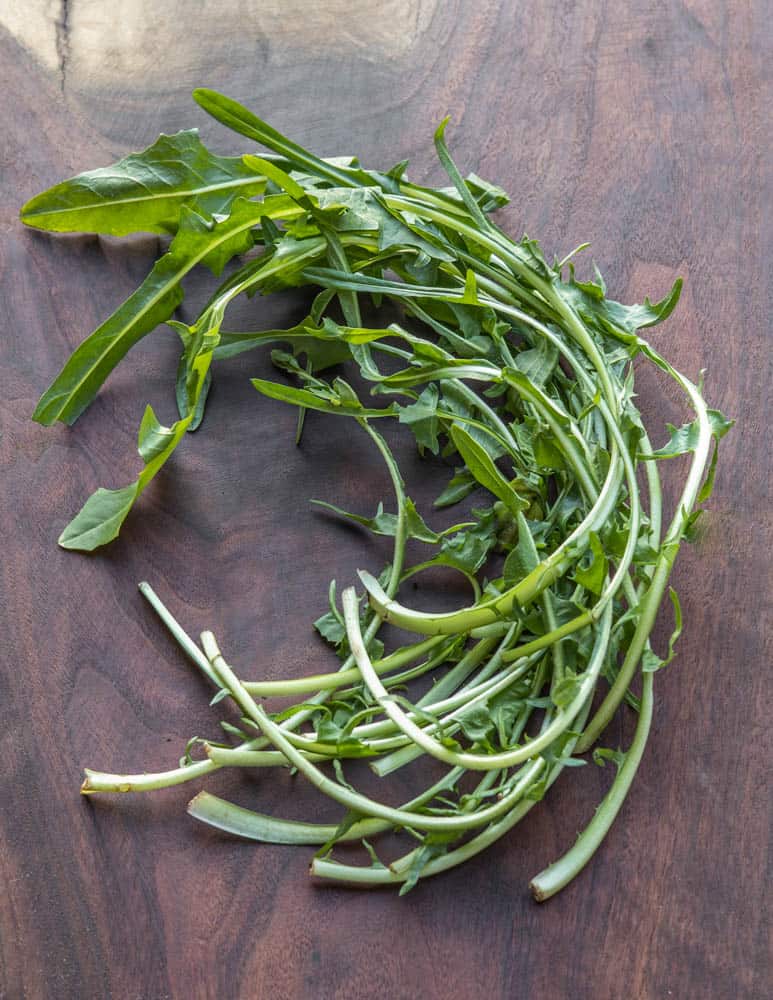
Out of all the places in the world where dandelions are harvested and used as a food, the best historical and cultural references I've found come from the Mediterranean, specifically Italy and Greece.
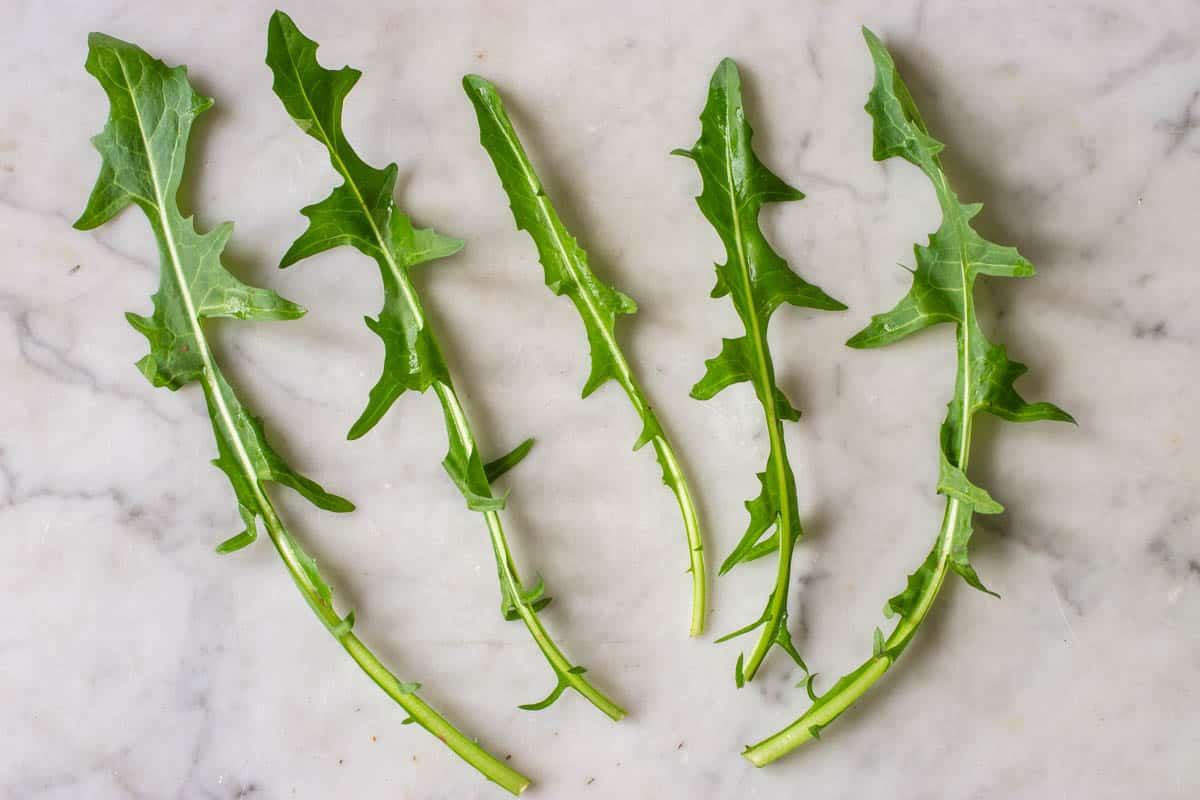
Italy
In Italy, dandelions are often referred to using their Latin name: Taraxacum. I read a lot of ethnobotanical literature about the Mediteranean and food plants harvested there, and dandelions are almost always mentioned, along with other asters. The leaves are used in many different soups, dishes of sauteed greens, and even filled pastas like prebboggion: the famous mixture of wild greens cooked in the spring in Liguria.
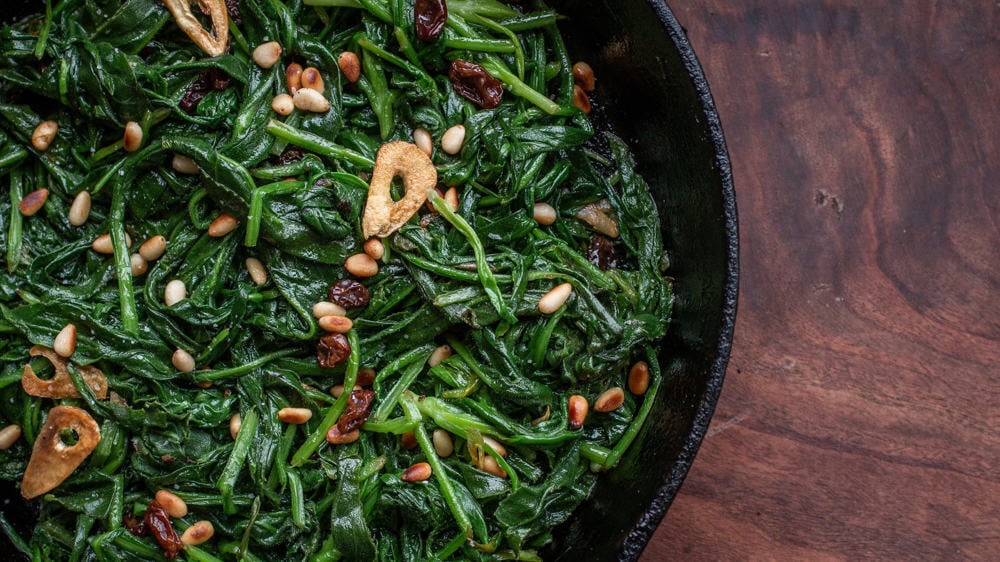
Greece
πικραλίδα is the word for dandelion in Greek, and should basically translate to chicory. Another common term for them is the word horta-a sort of blanket term that describes not one, but many different wild, edible plants. Typically the plants are boiled until tender and eaten with olive oil and lemon juice. My girlfriend's father, who was Greek, would go on walks with us, pointing to dandelions and exclaiming: "That's horta, we eat that!".
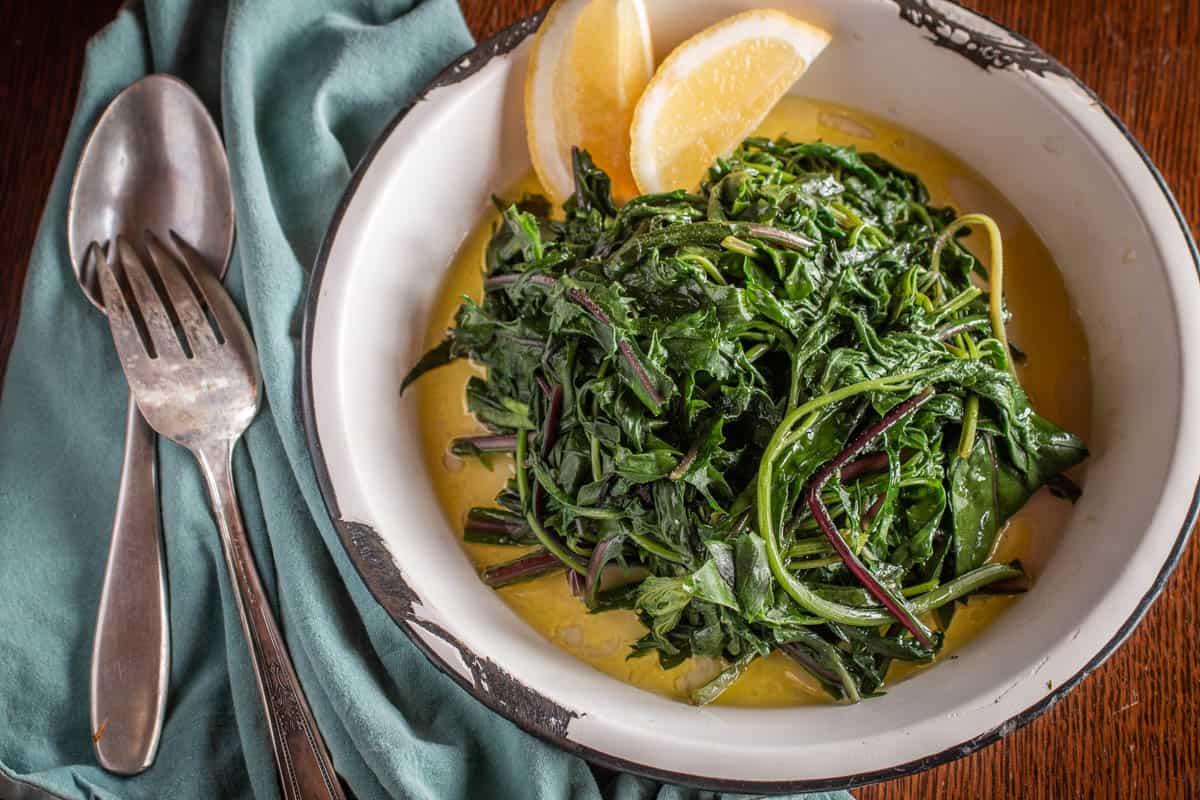
France
In France, dandelions are known as "Dente de Lion" (literally lions teeth) and are used to make a simple salad. Before you go running outside to grab some though, you'll want to read on and pay attention to my harvesting notes below.
Harvesting Dandelions
Dandelions will vary in quality depending on where they're harvested. Small, scrawny plants growing out of the sidewalk might not look like much of a meal, and they aren't, as there resources are pretty limited.
Grown on the edge of a rich farm field or a garden, dandelions can grow to impressive sizes, with the crowns so large they can be cooked like a small vegetable themselves.
Dandelion Look-a-likes
One thing it's always good to know about a wild plant you might harvest to eat is if it has any look alikes. Thankfully dandelions are so ubiquitous and widespread that most people instantly know what they are. There are no poisonous dandelion look a likes.
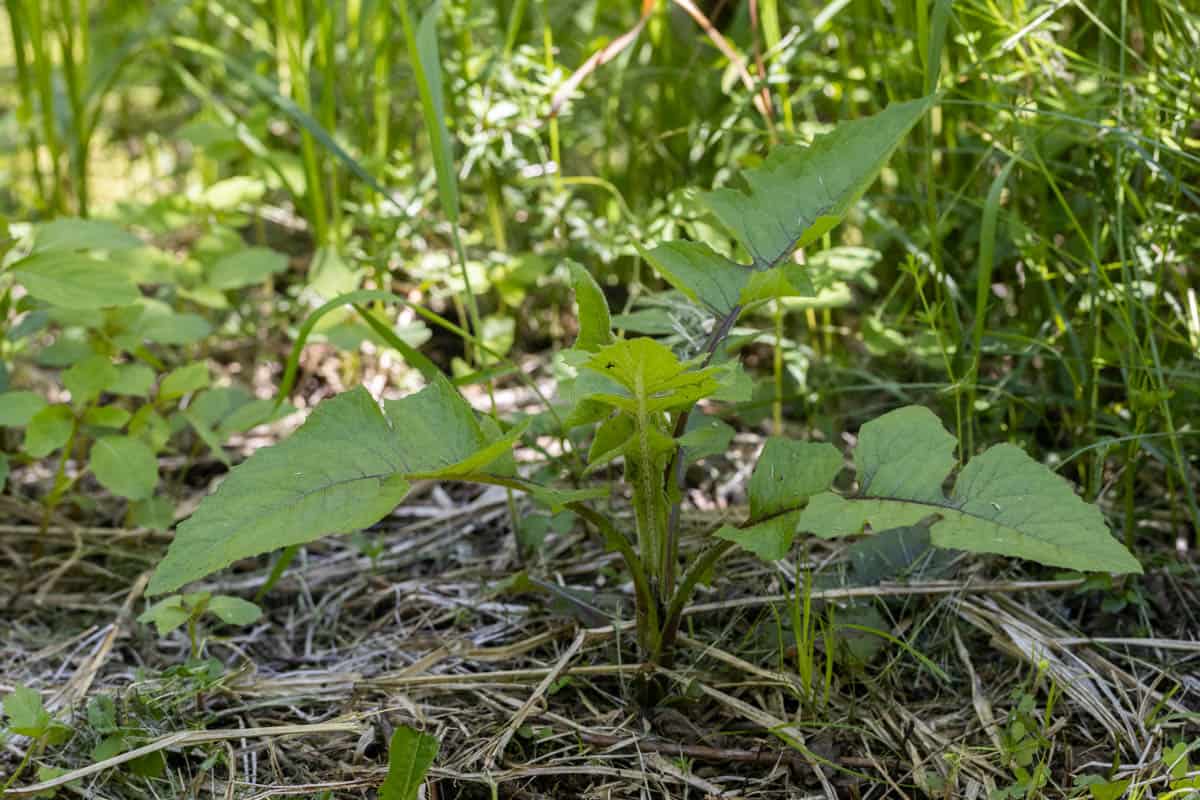
There are a couple look-a-like plants (namely cats ear and sow thistle) but thankfully all of the plants that resemble dandelion are also edible.
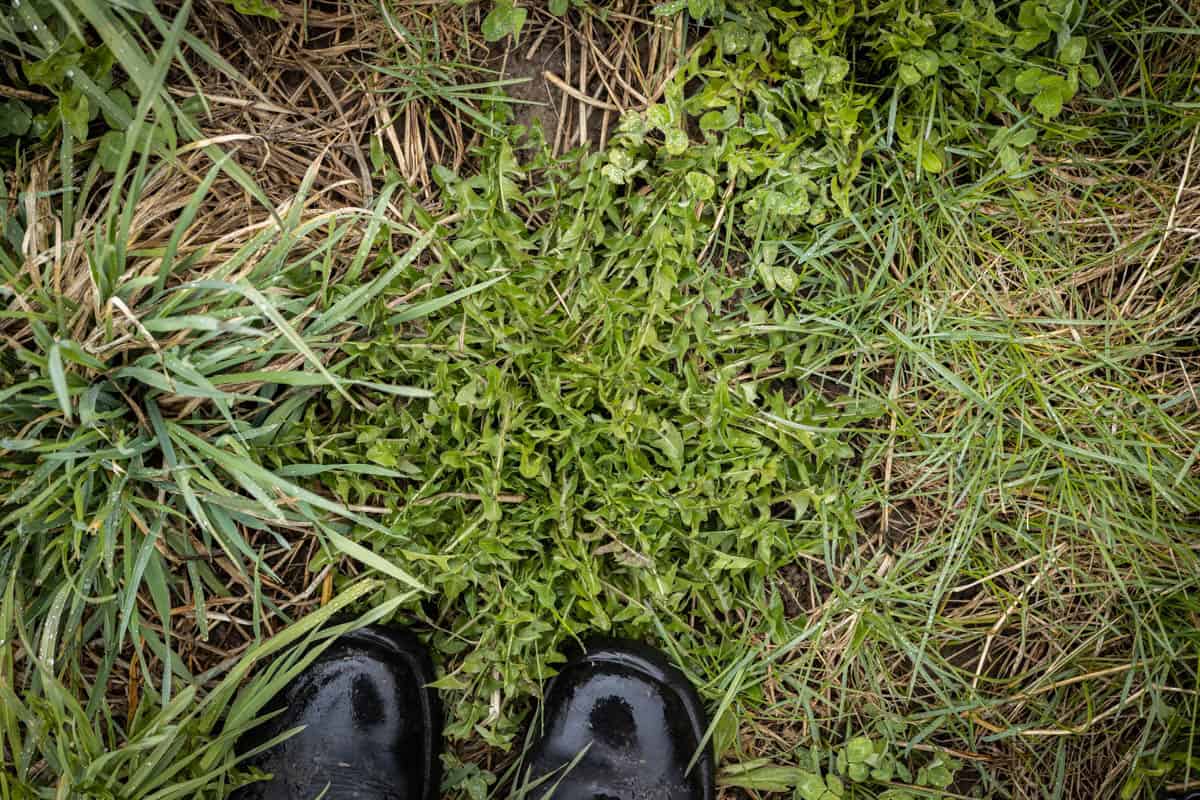
For the best flavor
To get dandelions at their peak of flavor, and with the least amount of bitterness or strong tasting compounds, you want to harvest the greens when they're very young, which will be whenever your spring is. Dandelions that have started to make flower stalks or flowers are too old, and need to be cooked to be palatable, at least for me.
The perfect size/length of greens for the best flavor is up for debate, but foragers that eat a lot of them may harvest them only a couple inches long, and this is often the case in areas where they're traditionally harvested, like Northern Italy. bigger isn't necessarily better, especially if your dandelions are truly wild.
Cultivated dandelions
Cultivated dandelions are much more mild than truly wild ones, and will stay tender longer as they're managed by growers as a food plant. If you find wild dandelions too strong for you, try looking for cultivated dandelions at your farmers market, local coop, or Asian or Middle Eastern Grocer-they make a great salad.
Cooking Dandelion Leaves and More
Dandelions are much more than something you can put in a salad, and I rarely, if ever eat them that way (at least the wild ones). Around the world, as you might have noticed from some of the dishes pictured in this post, dandelions are typically cooked.
Most of the time cooking is boiling them in salted water until they're tender and taste good to you, then sauteeing with garlic and oil, adding to soup (chop them first) or simply garnished with lemon juice and olive oil, as in Greek horta.
Dandelion Crowns / Hearts
Possibly my favorite part of the plant are the crowns, which are like a small, tender vegetable. I've come across specific recipes for this in Turkish cookbooks, but undoubtedly they're eaten in other places too. To harvest dandelion crowns, you need to get the dandelions when they're young-still in the basal rosette stage.
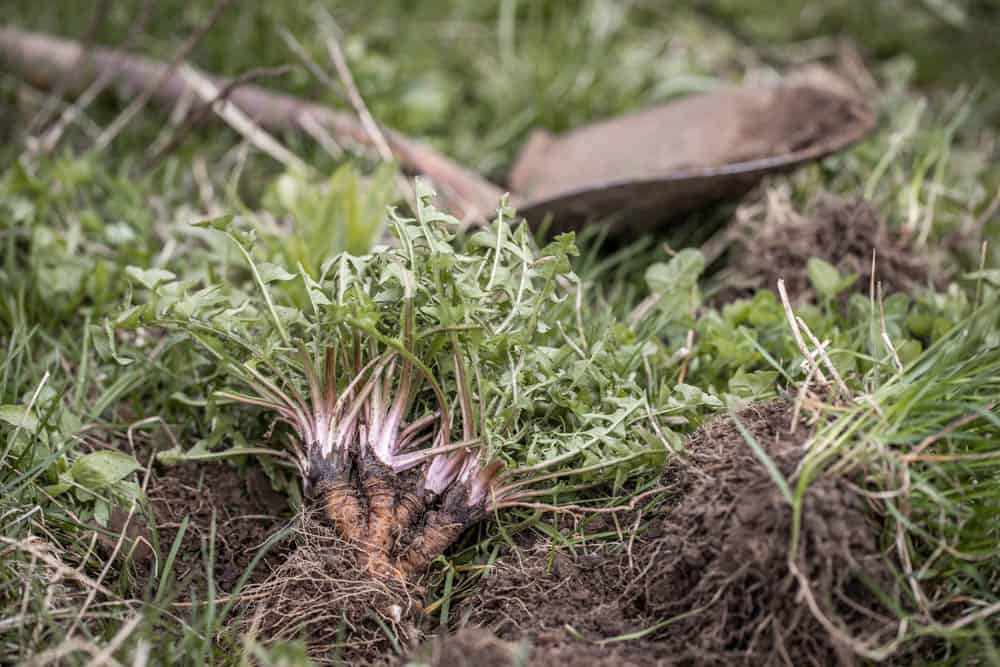
Using a shovel, you dig up the cluster of crowns, and cut them from the roots. From there I trim the leaves for another purpose, and cook the crowns like a small vegetable. Dandelion crowns are tender and delicious, with a texture that might remind you of an artichoke.
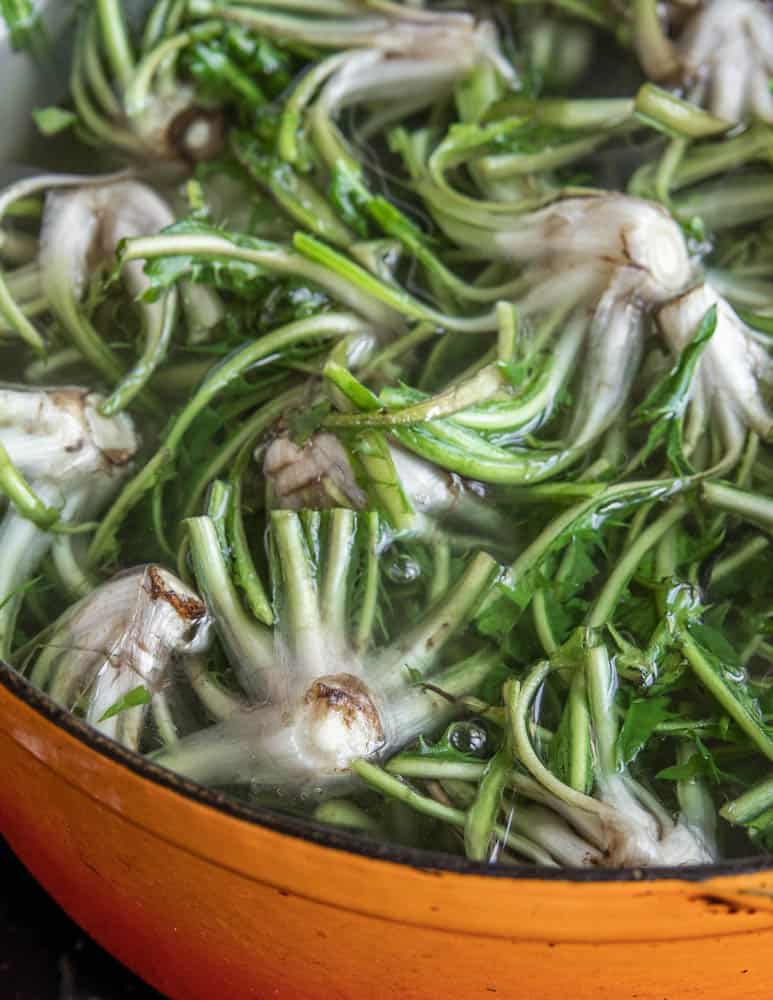
Dandelion Flower Buds
Before the flowers open, there will be dandelion buds, and they can make an interesting addition to things. I like to ferment them into capers (which are just an unopened flower).
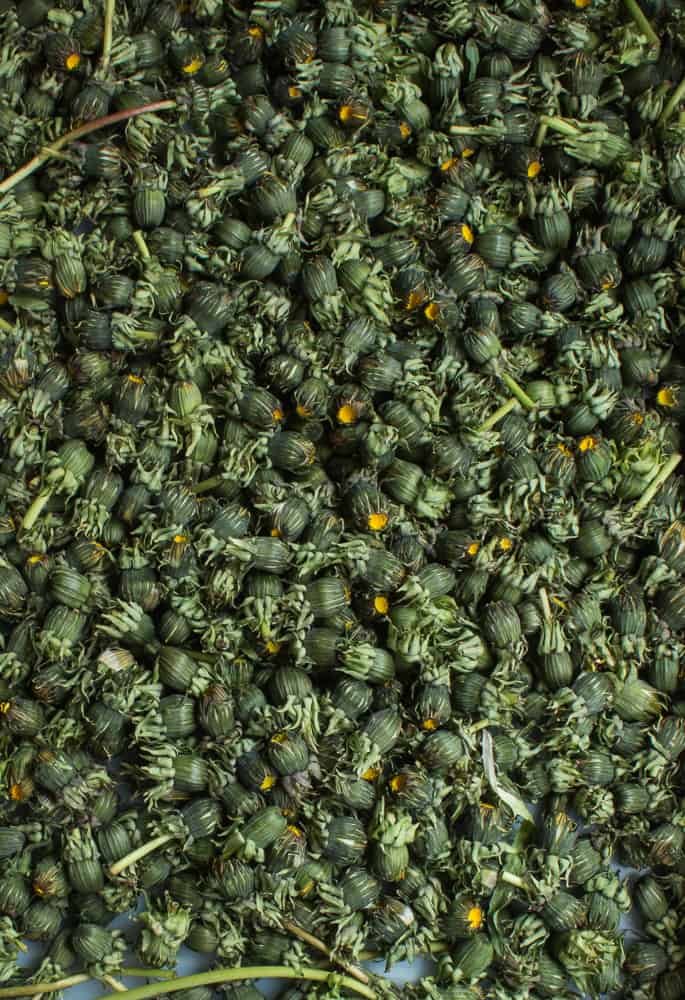
Unlike regular capers from a jar, dandelion capers either need to be steamed before fermenting, or cooked after fermenting to be tender and taste good. You can ferment them, then water bath can the dandelion capers as an option, and it works well. See the link at the bottom of the post for how to make them.
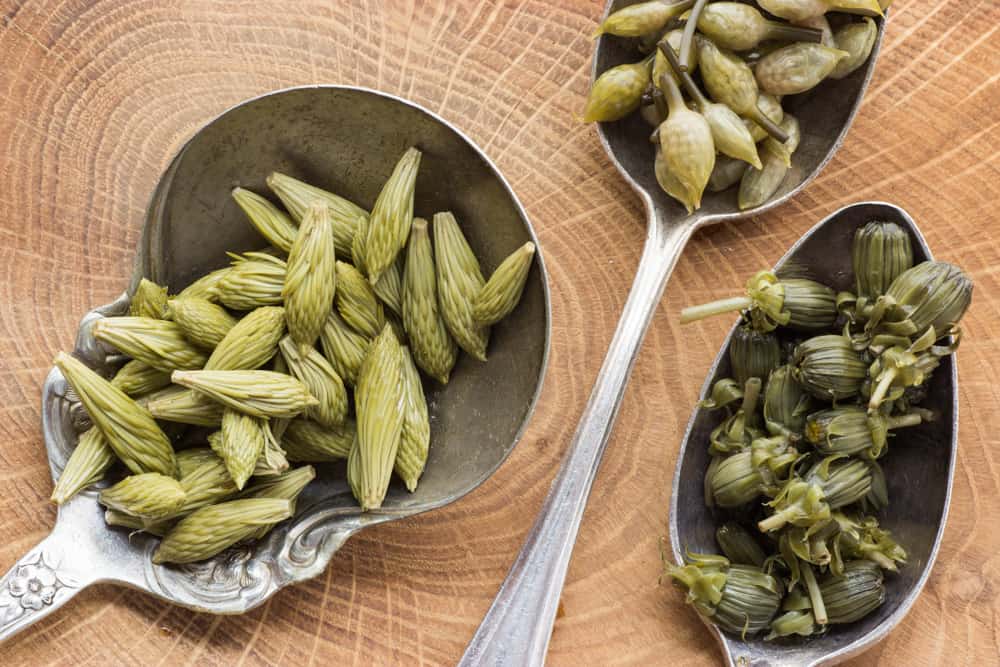
Dandelion Flowers
Dandelion flowers are edible, but not the part of the plant in my opinion, which I'd say would be the leaves or the crowns. Some people like to dip them in batter and fry them (when did fried batter ever taste bad?) and it's ok. Others will toss the flowers whole into salads, which I never do, but I may pick apart the flowers and sprinkle the petals on top of a dish or a salad. Dandelion flower jelly is also a thing.
Dandelion Roots
Dandelion roots are edible, but you won't be cooking them like a carrot as they're very tough and stringy. Typically the roots are washed, cut into pieces and dried, then made into tea, or ground into a powder to make a sort of coffee substitute. Dandelion root is often sold in the spice section of food coops and specialty grocers.
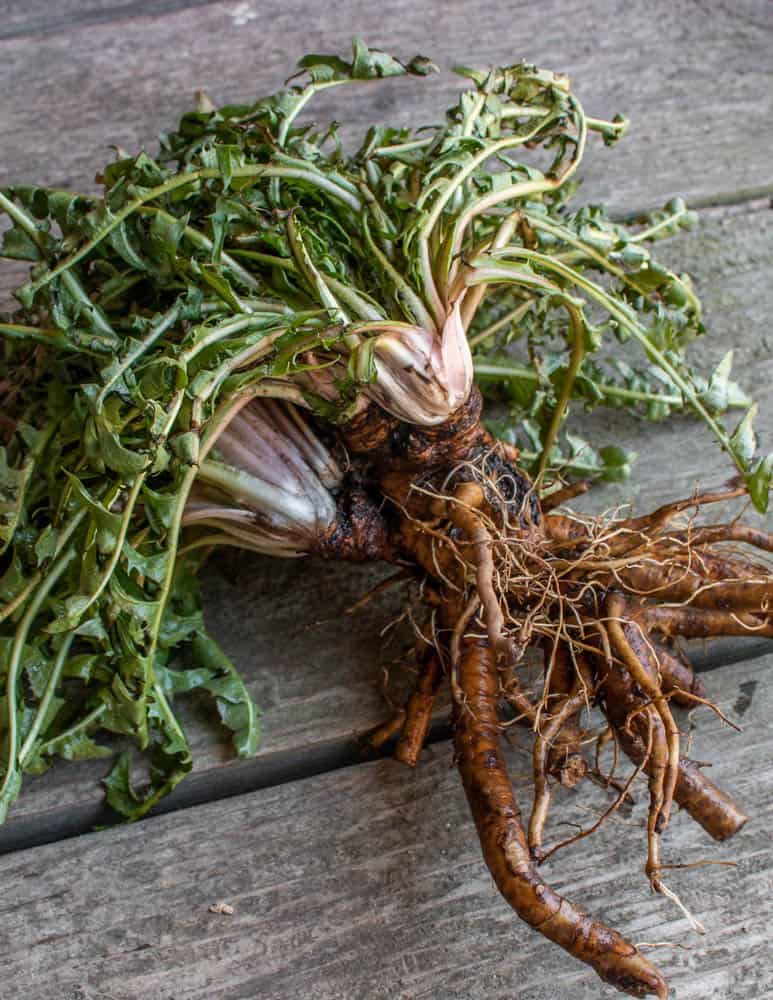

Nick
wow !! Thank you so very much for theese dandelion enlightening recipes; spring has just arrived and the garden is covered with yellow flowered Dandelions !!
Cookie
Thank you for enlightening me. Not only that, you have opened an area of curiosity which is endless. I am grateful for this. Thanx again.